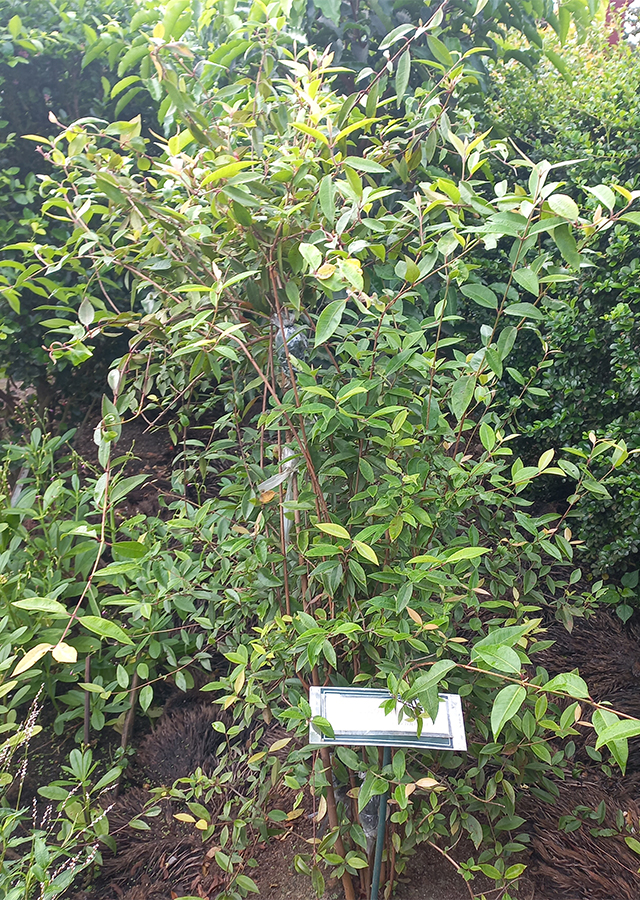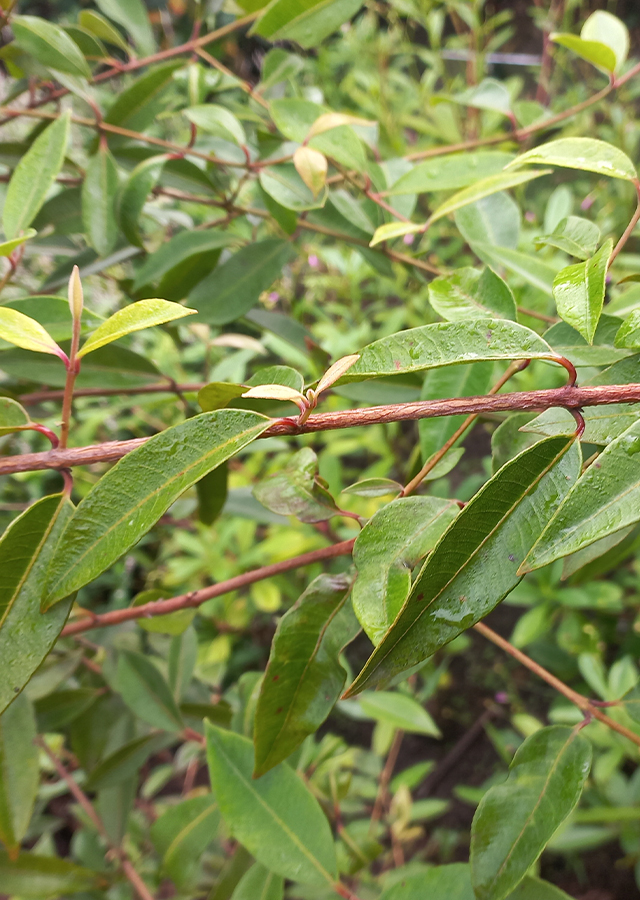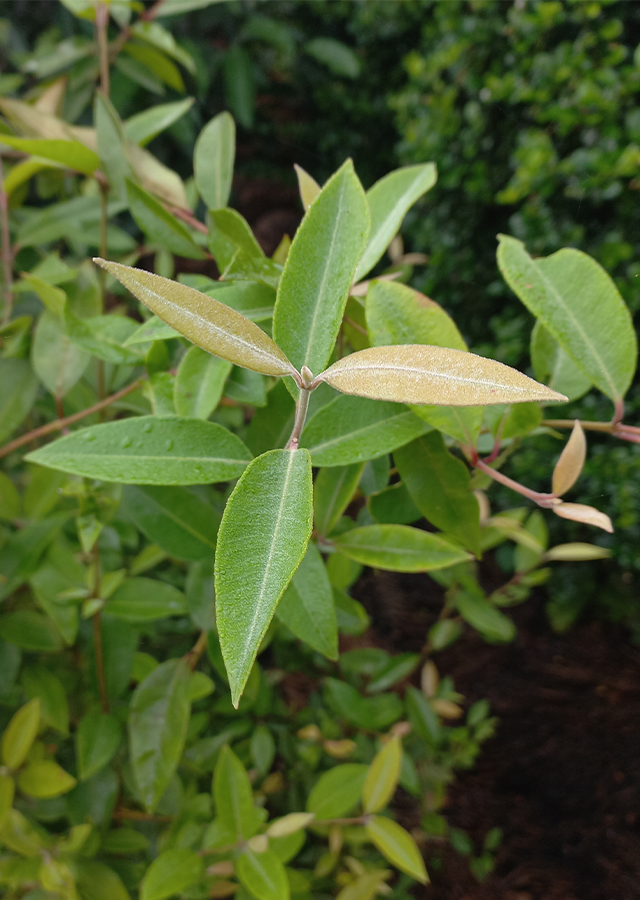Lemon Myrtle
Backhousia citriodora F. Muell.
Myrtaceae
Location in our garden
Principal



Synonym
-
Habitus
Shrubs. A slow-growing, aromatic, evergreen tall shrub or small tree, sometimes growing up to 20 m tall in the wild, though usually smaller and rarely above 5 m in cultivation
Part Used
Leaves
Growing Requirements
Full Sunshine
Drought Resistant
Low Temperature
Habitat
Forest
Overview
The lemon myrtle is native to Australia, and endemic to rainforest areas in the Australian coastal regions like Queensland and New South Wales. The tree is now grown in other parts of the word, including in South Africa and the southern sections of the United States and Europe. The plant is often used as a flavouring and to make a refreshing tea, and it has become widely used in the gourmet bushfood industry. The leaves are valued for their essential oil content, which is used in perfumes and soaps, and also grown as an ornamental. Lemon myrtle has a reputation as a powerful antiseptic and anti-virus agent that can destroy disease-carrying microorganisms.
Vernacular Names
No found data on this. Need further research.
Agroecology
A plant of the subtropical to tropical zones, it is also able to succeed in frost-free temperate regions. Mature plants can tolerate some frost, with records of plants tolerating occasional short-lived lows down to -8 °C, but younger plants require protection. Plants grow naturally in areas with 800 mm or more rainfall per year. Prefers a moist but well-drained fertile soil and a position in full sun. A hardy plant, it tolerates all but the poorest drained soils. Requires a circumneutral soil and are prone to yellowing in alkaline conditions. Established plants are fairly drought tolerant. Plants require protection from strong winds since they can easily snap off at the base of the trunk.
Morphology
- Root - taproot system
- Stem - woody.
- Leaves opposite, coriaceous, petiole up to 1.5 cm long; blade ovate-lanceolate, 7.5-12.5 cm long.
- Flower - inflorescence an axillary, umbel-like cyme with a cluster of numerous small flowers at the end of a branch; peduncle 2.5-3 cm long, pedicel longer than 1 cm. Calyx tubular, broadly campanulate, 4-lobed; petals 4, shorter than the calyx lobes; pistil with a 2-loculed ovary, each locule with 6-8 pendulous ovules, style filiform, stigma small.
- Fruit - an indehiscent capsule, surrounded by the persistent calyx.
Cultivation
- Generative propagation is by seed - surface sow onto a moist medium, standing the seed tray in almost half its depth of clean water and maintain a temperature around 16-18 °C. Seedlings take about 12 months to develop fully. When seedlings are about 5 mm tall, remove the tray from the water, leave for 4-5 days and then prick the seedlings out into individual containers.
- Vegetative propagation is by cutting of semi-ripe wood, and division.
Chemical Constituents
Essential oils (citral A, citral B, B-Myrcene, lynalool, citronellal, iso-neral, iso-geranial, trans-geraniol).
Traditional Medicinal Uses
- It has been used to treat allergies, colds, sore throats, gastric disturbances and infections.
- It has also been used to alleviate headaches, fevers and muscle cramps and spasms.
- Studies showed antifungal, antibacterial, and antimicrobial activities.
Part Used
Reference Sources
- Fern, Ken. (2021). Useful Tropical Plants: Backhousia citriodora. https://tropical.theferns.info/viewtropical.php?id=Backhousia+citriodora. 30-01-2022.
- Herbawisdom.com. (2021). Lemon Myrtle. Backhousia Citriodora. https://www.herbwisdom.com/herb-lemon-myrtle.html. 30-01-2022.
- Jansen, P.C.M. (2021). Backhousia citriodora (PROSEA). https://uses.plantnet-project.org/en/Backhousia_citriodora_(PROSEA). 30-01-2022.
- Kew Royal Botanic Gardens. (2017). Backhousia citriodora F.Muell. http://www.plantsoftheworldonline.org/taxon/urn:lsid:ipni.org:names:59106-1. 30-01-2022.
- Sultanbawa, Yasmina. (2016). Lemon Myrtle (Backhousia citriodora) Oils. Essential Oils in Food Preservation, Flavor and Safety (pp.517-521). DOI:10.1016/B978-0-12-416641-7.00059-6.

